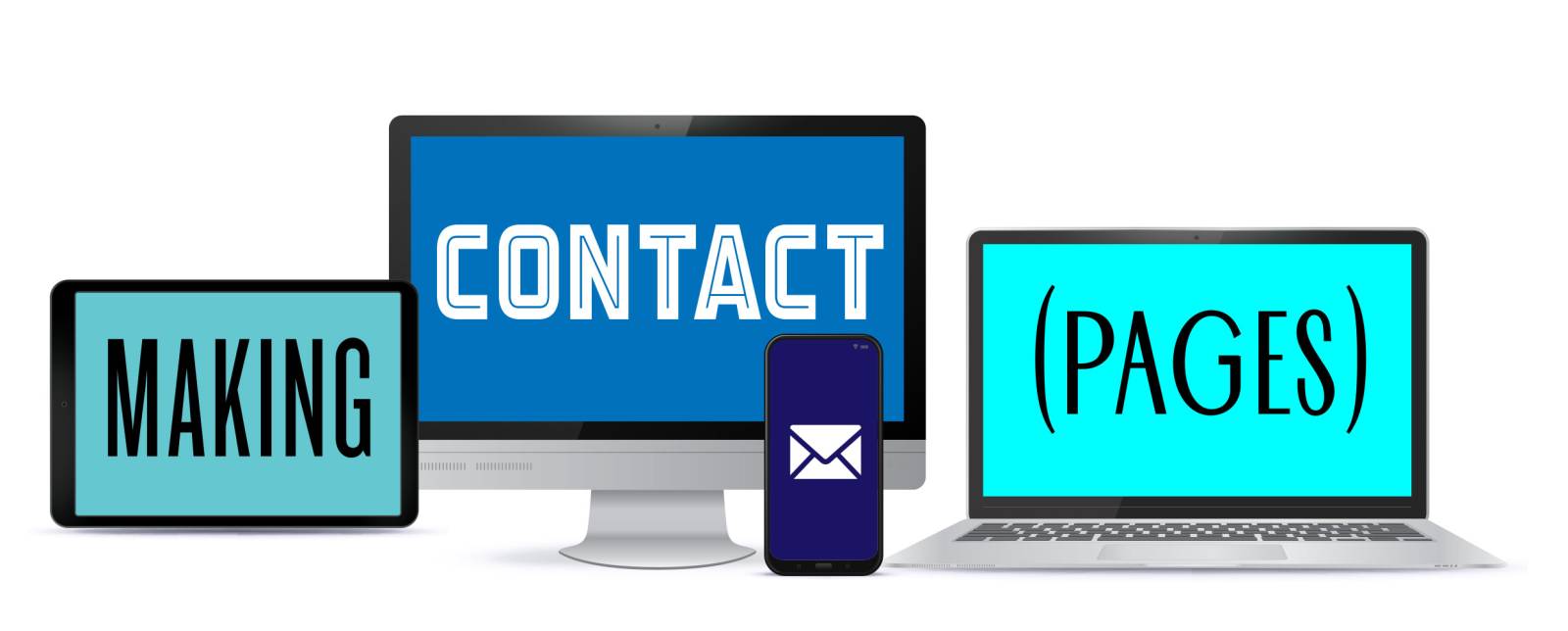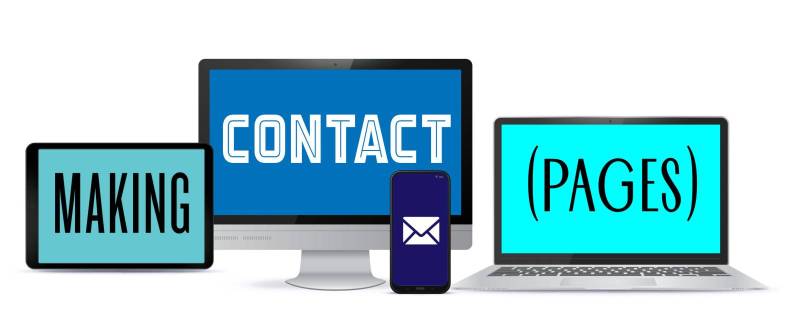Welcome back to my series on Why You Need A Website. Read that post first, if you haven’t. Then go to The Art of the About Page. And that brings us to a small but mighty topic: The Contact Page. This isn’t going to be a long post, but it is where I see a lot of sites fall down. Remember to think not as the person who’s building the site, but as a user of the site: how do you make it as easy as possible for the right people to contact you?
Let’s do this one as a Q+A, because trust me, people love to argue about this. Here we go:
Do you need a standalone contact page?
No. Some people put contact into on their home page, or in the footer, or on their About page, or an Info page. That’s fine, just make it easy to find.
I have a contact form, isn’t that enough?
Absolutely not. Contact forms are anathema to legit work emails. Every time I try one I regret it. Every. Time. (Same thing for DMs on social media, but go to post #1 in this series for that discussion.)
a) Half or more of the emails just go missing, show up later, get caught in weird filters, aren’t forwarded like they’re supposed to. I can’t tell you how many times I get an email from an artist long after I have had to give the job to someone else asking if it’s too late.
b) There’s no paper trail for the person sending. I send a ton of emails to artists. I need to be able to refer back to what I sent and when I sent it. I need to refer back to it all the time. My email server is a finely-tuned work machine. I need record of everything I do.
c) You can’t attach anything. I always send a bunch of attachments to artists in the first email. Pieces from their portfolio, comp covers, examples, etc. Things important to deciding if the artist wants or can take the job. Can’t do that in a contact form.
d) Every contact form email I send is literally me just asking for your real email bc of points b & c above. You’re going to give it to me anyway. Why slow things down? I need to know if an artist can take a job, or I need to move on. I can’t wait a week or more to figure out if I have to start the approving-an-alternate-artist chain all over again with my approvers.
Won’t I get a ton of spam if I put my email address on my page?
Maybe, but deal with it. That’s part of having a business online. If you must, make it a graphic instead of real type, or use the “address [at] website [dot] com” formatting. 10 spam emails are worth that real one offering you work.
What if I like having a contact form for fans?
Have both. Most fans will respect a simple “For professional inquiries contact name@site.com, all others use contact form.” Also, pro-tip, if you have a newsletter for fans, put the sign-up on your Contact Page.
If you have more questions, put them in the comments and I’ll add them to this post.
________
Here’s a few good examples, simple to complex:
Email right there in the menu bar, plain & simple. Can’t miss it.
This one shoots out an email for you, also perfectly acceptable. I generally cut & paste the email into my work program bc the window always comes up in Mail for some reason on Macs (yes I have tried to fix that, something with firewalls in my work email) but at least I have it. The email is also in the site footer.
There’s a contact form first, which is obviously the preferred way, but the email is subtly there as well, for people who need it.
If you have an agent, even better, let them deal with the spam!









Kind of tying into this, what’s your opinion on server-specific emails? Things like art@artistname.com VS artistname@gmail.com?
Honestly it doesn’t really matter. One looks a bit more put together, but an Art Director isn’t going to not work with you bc of it. I would worry about it more if you’re trying to get into fine art galleries, but even then only the bigger ones want your artist branding to be super together.
Great advice. Question, is there a consensus on adding a phone # as a second contact? Is that asking for a headache with the potential of spam calls?
Thank again.
I think most folks these days are phone-avoidant so I wouldn’t worry about it. 99.9% of the time someone is going to choose to email you even if you do put a phone number on there.